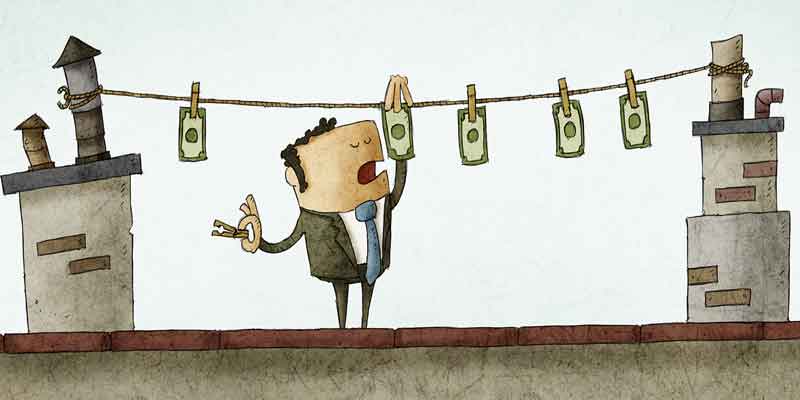Introduction
Frugal living is more than just pinching pennies; it’s a lifestyle choice that prioritizes financial mindfulness, resourcefulness, and intentional spending. In a world driven by consumerism, adopting frugality allows individuals to achieve financial independence, reduce stress, and live more sustainably. This article explores the principles, strategies, and benefits of frugal living, offering practical tips and insights to help you thrive on less while maintaining a fulfilling life.
Understanding Frugal Living
What is Frugal Living?
Frugal living involves making deliberate choices to maximize value while minimizing waste. Unlike extreme deprivation, frugality is about prioritizing what matters most—whether it’s saving for a dream vacation, paying off debt, or building a secure future. It’s about spending wisely, not necessarily spending less.
Frugality doesn’t mean sacrificing quality of life. Instead, it encourages creativity, such as cooking homemade meals, repurposing items, or finding free entertainment. According to a 2023 survey by the National Financial Educators Council, 65% of Americans who adopted frugal habits reported improved financial well-being and reduced stress.
The Philosophy Behind Frugality
At its core, frugal living aligns with values like simplicity, sustainability, and self-sufficiency. It challenges the societal pressure to equate happiness with material possessions. Philosophers like Henry David Thoreau, who advocated for simple living in Walden, emphasized that true wealth lies in experiences and freedom, not excess.
Frugality also fosters environmental consciousness. By consuming less and reusing more, frugal individuals reduce their ecological footprint. A 2022 study by the Environmental Protection Agency found that households practicing frugal habits, like repairing instead of replacing items, reduced household waste by up to 20%.
Myths About Frugal Living
Many misconceptions surround frugality. Some view it as synonymous with being cheap, but frugality prioritizes value over cost-cutting at the expense of quality. Another myth is that frugal living is only for low-income individuals. In reality, people across income levels practice frugality to achieve goals like early retirement or philanthropy.
Frugal living also doesn’t mean living without joy. Frugal individuals often find satisfaction in creative solutions, such as hosting potlucks instead of dining out or exploring free community events. The key is intentionality, not deprivation.

The Benefits of Frugal Living
Financial Freedom and Security
Frugal living is a powerful tool for achieving financial independence. By reducing unnecessary expenses, individuals can allocate funds toward savings, investments, or debt repayment. For example, cutting $100 from monthly expenses translates to $1,200 annually, which can grow significantly in a retirement account over time.
A 2024 Fidelity study found that 78% of Americans who practiced frugal habits had an emergency fund covering at least three months of expenses, compared to 54% of the general population. This financial cushion provides peace of mind and resilience against unexpected events like job loss or medical emergencies.
Reduced Stress and Improved Mental Health
Financial stress is a leading cause of anxiety, with a 2023 American Psychological Association survey reporting that 72% of adults feel stressed about money at least occasionally. Frugal living alleviates this by promoting budgeting and mindful spending, reducing reliance on credit and the pressure to “keep up” with societal expectations.
Frugality also encourages gratitude. By focusing on needs rather than wants, individuals often report greater contentment. Studies, such as one from the University of California in 2022, show that people who prioritize experiences over material goods experience higher levels of life satisfaction.
Environmental and Social Impact
Frugal living aligns with sustainable practices. By consuming less, repairing items, and choosing second-hand goods, frugal individuals contribute to a circular economy. The Ellen MacArthur Foundation reported in 2023 that adopting frugal habits globally could reduce consumer waste by 15% by 2030.
Additionally, frugality fosters community. Sharing resources, bartering, or participating in local buy-nothing groups strengthens social bonds. These practices not only save money but also build a sense of belonging and mutual support.
Practical Strategies for Frugal Living
Budgeting and Financial Planning
A solid budget is the foundation of frugal living. The 50/30/20 rule—allocating 50% of income to needs, 30% to wants, and 20% to savings or debt repayment—is a popular starting point. Apps like YNAB (You Need A Budget) or Mint can help track spending and identify areas for savings.
To create a frugal budget:
- Track Expenses: Monitor spending for 30 days to understand habits.
- Set Goals: Define short-term (e.g., paying off credit card debt) and long-term goals (e.g., retirement savings).
- Cut Non-Essentials: Eliminate or reduce subscriptions, dining out, or impulse purchases.
- Automate Savings: Set up automatic transfers to savings accounts to prioritize saving.
Frugal Food and Grocery Habits
Food is a significant expense for most households, but frugal strategies can reduce costs without sacrificing nutrition. Here are some tips:
- Meal Planning: Plan weekly meals to avoid impulse buys and food waste. A 2023 USDA report found that meal planning reduces grocery costs by 10–15%.
- Buy in Bulk: Purchase staples like rice, beans, or oats in bulk to save money.
- Cook at Home: Preparing meals from scratch is cheaper and often healthier than eating out. Batch cooking saves time and energy.
- Shop Smart: Use coupons, shop at discount stores, and buy seasonal produce to lower costs.
- Grow Your Own: Even a small herb garden or container vegetables can reduce grocery bills.
Housing and Utility Savings
Housing is often the largest expense, but frugal choices can make a difference:
- Downsize: Consider smaller homes or apartments to reduce rent or mortgage payments.
- Share Costs: Roommates or co-housing arrangements can halve housing expenses.
- Energy Efficiency: Use LED bulbs, unplug electronics, and insulate homes to lower utility bills. The U.S. Department of Energy estimates that energy-efficient practices can save households $500 annually.
- Negotiate Rent: In competitive markets, negotiate with landlords for lower rent or included utilities.

Transportation on a Budget
Transportation costs, from car payments to fuel, can strain budgets. Frugal alternatives include:
- Carpooling or Public Transit: Use buses, trains, or ridesharing to reduce fuel and maintenance costs.
- Biking or Walking: For short trips, these options save money and improve health.
- Maintain Vehicles: Regular maintenance, like checking tire pressure, improves fuel efficiency and extends car life.
- Buy Used: Opt for reliable used cars instead of new ones to avoid depreciation costs.
Frugal Entertainment and Lifestyle
Frugal living doesn’t mean giving up fun. Creative alternatives include:
- Free Events: Attend community festivals, library workshops, or free museum days.
- Outdoor Activities: Hiking, picnics, or beach trips offer low-cost enjoyment.
- Subscription Sharing: Split costs for streaming services with family or friends.
- DIY Hobbies: Learn skills like knitting, woodworking, or cooking to create gifts or decor.
Shopping and Consumer Habits
Frugal shopping focuses on value and longevity:
- Buy Second-Hand: Thrift stores, online marketplaces, and consignment shops offer quality items at a fraction of the cost.
- Wait Before Buying: Implement a 24-hour rule for non-essential purchases to curb impulse buying.
- Invest in Quality: Choose durable goods (e.g., a sturdy backpack) over cheap items that need frequent replacement.
- Repair, Don’t Replace: Fix clothing, furniture, or electronics to extend their life.
Overcoming Challenges in Frugal Living
Social Pressures and Expectations
Frugal living can clash with societal norms, especially in consumer-driven cultures. Friends or family may question choices like declining expensive outings or gifting homemade items. To navigate this:
- Communicate Values: Explain that frugality aligns with personal goals, like financial freedom or sustainability.
- Suggest Alternatives: Propose low-cost activities, like potlucks or game nights, to maintain social connections.
- Stay Confident: Focus on long-term benefits rather than short-term judgments.
Time and Effort
Frugal habits, like cooking from scratch or repairing items, require time and effort. To balance this:
- Prioritize: Focus on high-impact frugal practices, like meal prep, before tackling time-intensive ones.
- Batch Tasks: Combine tasks, like cooking multiple meals at once, to save time.
- Learn Skills Gradually: Start with simple skills, like basic sewing, and build expertise over time.
Access to Resources
Not everyone has equal access to frugal resources, like bulk stores or affordable housing. In such cases:
- Leverage Community: Join local buy-nothing groups or food co-ops to access shared resources.
- Use Online Tools: Websites like Freecycle or Craigslist offer free or low-cost items.
- Advocate for Change: Support policies that improve access to affordable housing, food, or transportation.
Frugal Living in a Digital Age
Technology as a Frugal Tool
Technology can enhance frugal living. Apps like GoodRx save on prescriptions, while platforms like Rakuten offer cashback on purchases. Online communities, such as Reddit’s r/Frugal, share tips and resources for saving money.
However, technology can also tempt overspending through targeted ads or subscription traps. To stay frugal:
- Unsubscribe: Opt out of marketing emails to avoid impulse purchases.
- Use Ad Blockers: Reduce exposure to online ads.
- Compare Prices: Use tools like Honey or CamelCamelCamel to find the best deals.
The Rise of Minimalism
Frugal living intersects with minimalism, a movement that emphasizes owning fewer, high-value possessions. Minimalism encourages decluttering, which can save money by reducing storage costs and preventing unnecessary purchases. A 2023 study by the Minimalist Institute found that 62% of minimalists reported increased savings after adopting the lifestyle.
Frugality and Digital Nomadism
The rise of remote work and digital nomadism has created new opportunities for frugal living. By relocating to areas with lower costs of living or house-sitting to reduce housing expenses, digital nomads can stretch their budgets further. Platforms like TrustedHousesitters or Workaway connect frugal travelers with cost-saving opportunities.
The Global Perspective on Frugal Living
Frugality Across Cultures
Frugal practices vary globally. In Japan, the kakeibo budgeting method emphasizes mindful spending and reflection. In India, frugality is often a cultural norm, with families reusing items and cooking in bulk to save money. Western countries, like the U.S., have seen a resurgence of frugality post-2008 recession, with movements like FIRE (Financial Independence, Retire Early) gaining traction.
Economic and Environmental Context
Global economic challenges, like inflation (peaking at 9.1% in the U.S. in 2022) and supply chain disruptions, have made frugality a necessity for many. Environmental concerns also drive frugal choices, as consumers prioritize sustainable brands and second-hand goods to combat climate change.
Conclusion
Frugal living is a transformative approach to managing resources, offering financial freedom, reduced stress, and a smaller environmental footprint. By embracing budgeting, mindful spending, and creative solutions, anyone can thrive on less without sacrificing joy or purpose. Whether you’re paying off debt, saving for a goal, or simply seeking a simpler life, frugality empowers you to take control of your finances and future.
As the world faces economic uncertainty and environmental challenges, frugal living is not just a personal choice but a global movement toward sustainability and resilience. Start small—try one frugal habit today—and discover how thriving on less can lead to a richer, more meaningful life.
